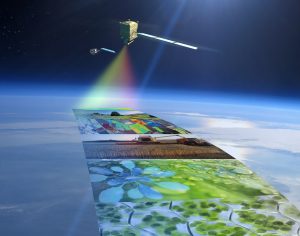Teledyne e2v has been awarded a multimillion euro contract by OHB System AG to supply customised Charge Coupled Device (CCD) image sensors for the Fluorescence Explorer (FLEX) satellite mission, under a programme of and funded by the European Space Agency (ESA). The FLEX mission, which is the eighth in ESA’s Earth Explorer programme, is scheduled to launch in 2022. For the first time, it will enable plant photosynthetic activity to be measured from space by detecting the faint fluorescent glow emitted when atmospheric carbon dioxide and sunlight is converted into energy-rich carbohydrates.
Teledyne e2v will design, develop and carry out the qualification of high performance CCDs and their customised package for integration into the FLEX instrument, which is under development by Leonardo S.p.A, Florence, Italy and OHB System AG, Wessling, Germany.
The ESA Earth Explorer missions focus on the atmosphere, biosphere, hydrosphere, cryosphere and the Earth’s interior, with emphasis on the interactions between these components and on the impact that human activities have on the Earth’s processes. The FLEX mission will advance understanding of the functioning of the photosynthetic machinery and the actual health and performance of terrestrial vegetation. The mission will deliver a monthly global map with an on-ground spatial resolution of 300 x 300 metres.
The FLEX payload consists of the high-resolution Fluorescence Imaging Spectrometer (FLORIS), a pushbroom instrument with a swath width of 150km and covering the 500-780nm spectral range.
The Teledyne e2v CCDs are of custom frame transfer design, meeting the specific requirements of the ESA-funded FLORIS instrument. They feature large rectangular pixels, high quantum efficiency performance, low noise and the ability to run at fast transfer speeds. The custom package for the CCDs is designed to be compact as well as closely matching their thermal properties, to meet the thermomechanical requirements. It also features two flexible cables for electrical connection and precision alignment of the sensors in the FLORIS focal plane array.
Information from FLEX will help scientists improve their understanding of the way carbon moves between plants and the atmosphere, and how photosynthesis affects carbon and water cycles. It will also lead to better insight into plant health and stress. This is of particular relevance since the growing global population is placing increasing demands on the production of food and animal feed.
“Teledyne e2v already provides enabling technology for ESA’s visible Sentinel missions including Sentinel-2 and Sentinel-3 which are delivering astonishing images. We are therefore delighted to further extend this relationship as part of the OHB and Leonardo team to provide the critical CCD sensor technology for the exciting FLEX mission. It is further proof that when satellite missions require custom-designed image sensors offering outstanding performance, then Teledyne e2v is the partner of choice,” says Giuseppe Borghi, Vice President of Business Development at Teledyne e2v.



















